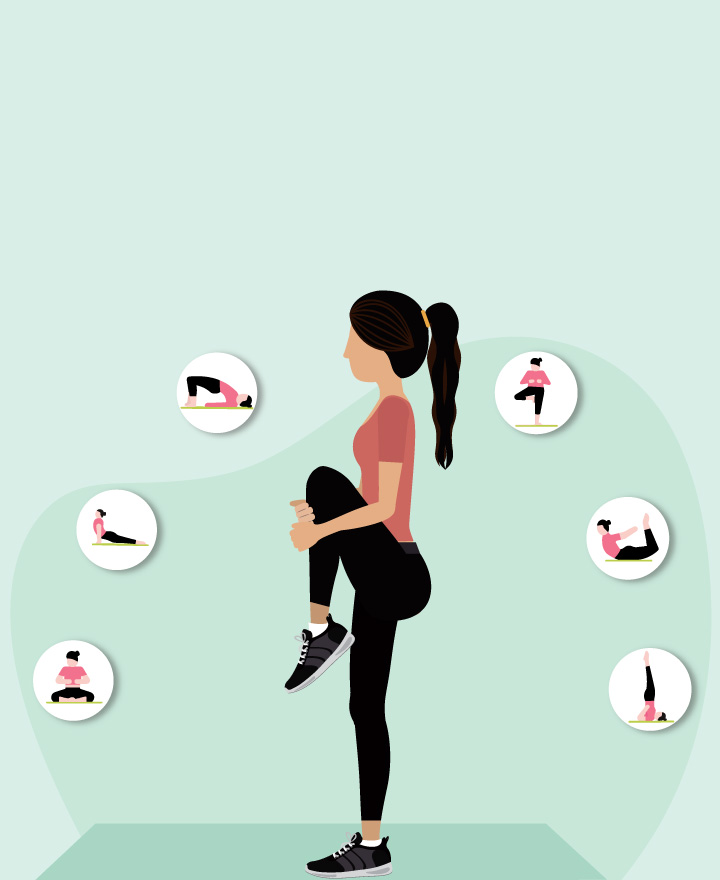

Calisthenics Exercises: Types & Benefits
In today’s time, our hectic lifestyle is making it absolutely necessary for us to focus on health and keep ourselves healthy. Getting fit shouldn’t be just a part of your New Year resolution but it should be a part of your daily routine, and with the new fitness regime, Calisthenics, you may want to kickstart your journey today. Read on to know more.
What is a Calisthenics Workout?
The term comes from the Greek words 'Kalos', which means beauty, and 'Stenos', which translates as strength. It is also known as 'street workout'. Calisthenics is a form of exercise that uses your body weight for resistance, rather than equipment like dumbbells or machines. It’s a great way to build muscles and improve overall fitness without going to gym or using any equipment. It includes movements like push-ups, pull-ups, squats, and planks, focussing on strength, flexibility, and coordination.
Those who follow this regime have witnessed their muscles gain strength and have noticed their overall health improving.
Why is it so popular?
Callisthenic is different from what people do at the gym as it goes a step further by using the method of ‘progressions and variations’ to build strength and flexibility. It also teaches your body to gain more balance and coordination. Calisthenics have several variations of exercises which one can choose. For instance, if you are struggling with push-ups today, you can start with knee push-ups before you proceed to full-body push-ups. There’s an exercise you can do to develop every muscle in your body.
Types of Calisthenics
1. Push and pull exercises:
These exercises focus on training the muscles responsible for pushing movements (such as chest, shoulders, and triceps) or pulling movements (such as the back, shoulders, and arms). Examples of pushing exercise include push-ups, dips, and handstand push-ups, while latter include pull-ups, chin-ups, and rows.
2. Single-leg exercises:
These exercises focus on training one leg at a time. They target the muscles in your legs, hips, and thighs, including the hamstrings and glutes. Examples of single-leg exercises include lunges, single-leg squats, and step-ups.
3. Core exercises:
This includes planks, sit-ups, and leg raises. These exercises focus on training the muscles responsible for maintaining stability and balance during movement which are the abdominal and lower back muscles.
4. Plyometric exercises:
Example of this type of callisthenic includes jump squats, clap push-ups, and box jumps. These exercises focus on power-based movements that challenge the muscles to work quickly and forcefully.
Benefits
Calisthenics offer several benefits —
1. It helps build strength using your body weight and targeting various muscle groups simultaneously.
2. It helps improve overall flexibility and mobility as many of these exercises incorporate stretching movements.
3. It enhances your body awareness and control as callisthenic exercises often require balance and coordination.
4. It is accessible and convenient for anyone as it can be done anywhere and no equipment is needed.
5. It’s a budget-friendly and cost-effective way to stay fit.
6. It can lead to improved cardiovascular health as many Calisthenics exercises are dynamic and elevate heart rate.
7. It can have a positive impact on mental health, boost mood, reduce stress, improve overall well-being.
How many calories can you burn?
The number of calories burned with a Calisthenics workout depends on certain variables, such as —
• The intensity of your workout
• Your age
• Your weight
• The effort you put in
On average, a person doing Calisthenics for 30 minutes can burn:
| Calories | Weight in Kg |
| 135 | 56.7 |
| 167 | 70 |
| 200 | 90.7 |
A person who ups the intensity and performs a vigorous Callisthenic workout for 30 minutes can burn calories, as listed below.
| Calories | Weight in Kg |
| 240 | 56.7 |
| 298 | 70 |
| 355 | 90.7 |
Remember to consult your doctor before you start this new exercise regime.
Things to be mindful of
You may be roaring to go, but please don't think you have gotten it all from day one. The trick is to be slow and steady. Your body will tell you when it can't take the resistance anymore. Pay heed to the signs, and don't go overboard. If possible, embark on this journey with someone who has a little more experience. Remember, you can always choose to change your regime.
Conclusion
Simply put, Calisthenics workout is a form of fitness that leverages gravity and body weight to challenge your fitness level and, as a result, help you gain strength.
One of the important components of our overall wellness is also being financially secured. Healthcare emergencies can happen any time, but a good health insurance policy can protect you from such uncertain situations. To know more about Wellness and other health related tips, visit the wellness corner.
Source: verywellfit.com, webmd.com
Disclaimer: This blog provides general information and discussions about health and related subjects. The information and other content provided in this blog, website or in any linked materials are not intended and should not be considered, or used as a substitute for, medical advice, diagnosis or treatment. Kindly contact your Doctor before starting a new medicine or health regime.
Related Articles
6 Simple and Effective At-Home Workout to Stay Fit and Active
Alternative Workouts If You Are Bored Of Gymming!
Be Fit by Doing these 8 Cardio Exercises at Home
7 Must Do Exercises for Senior Citizens
6 Exercises to Lose Weight Effectively
Published on June 24, 2024














 Health Insurance
Health Insurance  Travel Insurance
Travel Insurance  Car Insurance
Car Insurance  Cyber Insurance
Cyber Insurance  Critical Illness Insurance
Critical Illness Insurance
 Pet Insurance
Pet Insurance
 Bike/Two Wheeler Insurance
Bike/Two Wheeler Insurance  Home Insurance
Home Insurance  Third Party Vehicle Ins.
Third Party Vehicle Ins.  Tractor Insurance
Tractor Insurance  Goods Carrying Vehicle Ins.
Goods Carrying Vehicle Ins.  Passenger Carrying Vehicle Ins.
Passenger Carrying Vehicle Ins.  Compulsory Personal Accident Insurance
Compulsory Personal Accident Insurance  Travel Insurance
Travel Insurance  Rural
Rural